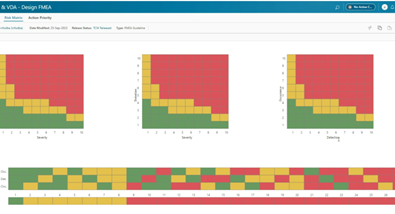Supply Chain Risk? Here’s How to Manage It.

Follow these Supply Chain Risk Management practices to improve the efficiency of your supply chain.
My previous post focused on identifying the challenges faced by Enterprises with managing existing suppliers as well as onboarding new ones. Today, we address the practices used in industry to mitigate supply chain risk.
 Risk Management best practices to improve the efficiency of your supply chain.
Risk Management best practices to improve the efficiency of your supply chain.
Supplier Chain Risk Management Practices
Companies that practice supply chain risk management have processes to identify risks, quantify them, and assign responsibility for the management of the risk and for taking risk mitigating action. Commodity managers, for example, will examine the risk that any sole source activity might have on the enterprise. Geographically extended supply chains, geopolitical issues, and weak intellectual property protection laws add complexity to risk analysis.
Social and environmental responsibility is also an important issue to companies.Many low-cost country suppliers are now audited to ensure that work environments are safe, environmentally responsible, and are not in violation of minimum wage or child labor laws.

Financial viability is another significant risk factor.Companies need to monitor the financial health of their suppliers and should heed any early warning signals of financial difficulties, such as constant price increases, failure to meet complete deliveries on time, requests for pre-payment, and lack of reinvestment into their businesses.
In recent years, Cybersecurity has become more of a significant risk.Supplier IT must be monitored to prevent compromise of software, hardware or firmware, and to avoid misuse of intellectual property. Our blog on Secure Data Exchange details how Teamcenter Supplier Collaboration securely exchanges data with suppliers.
Supply Chain Risk Management also requires planning for risks from natural disasters such as hurricanes or floods, which can interrupt supply for months.Sourcing from dispersing geographic locations as well as maintaining optimized inventory levels can mitigate this risk. Ever-changing regulatory requirements can also affect supply, affecting both cost and lead time. Increased regulatory requirements can require product changes, additional test procedures, more stringent traceability requirements, as well as increased packaging, labeling, and transportation requirements.

Formal programs which monitor the health of suppliers serve to reduce risk exposure in the supply chain.This includes quantitative factors such as adherence to quality processes (APQP),financial ratings from sources such as D&B, the risk associated with the distance between supplier and factory, the risk of a supplier’s factory more prone to natural disaster, labor strike, etc. Qualitative factors are an integral part of the risk model as well, such as supplier willingness to partner and philosophical alignment. Models may rank risks in a matrix form by likelihood and consequence.Purchasing executives may use these tools to model the impact of supply, should a risk materialize.
Detrimental changes in risk should be a call to action for a company to quickly determine the root cause and chart a course of action.Risk-mitigating actions could result in the greater use of alternate suppliers, greater use of long-term agreements with better-performing suppliers, increasing inventory levels, increasing supplier audit frequency, or the initiation of a formal supplier improvement program.
While the focus of Supply Chain Risk Management is to reduce risk, a tangible benefit of a Risk Management program is an improvement in the efficiency of the supply chain, as strategic suppliers are identified and their performance tracked as part of the process.Profiles of such strategic suppliers should be shared throughout the enterprise, enabling supply chain best practices to become part of the product development process.This will permit the engineering and quality communities to work with the most qualified suppliers up front, reducing cost as well as time to market, and improving quality.
You don’t want to miss my previous post which discusses the increased use of suppliers for design in addition to manufacturing has introduced new risks for the enterprise.
About the Author:
Steven Heutlinger is a Siemens PLM Software Solutions Consultant, with expertise in Supplier Integration solutions. He has been in the PLM industry for over 15 years



